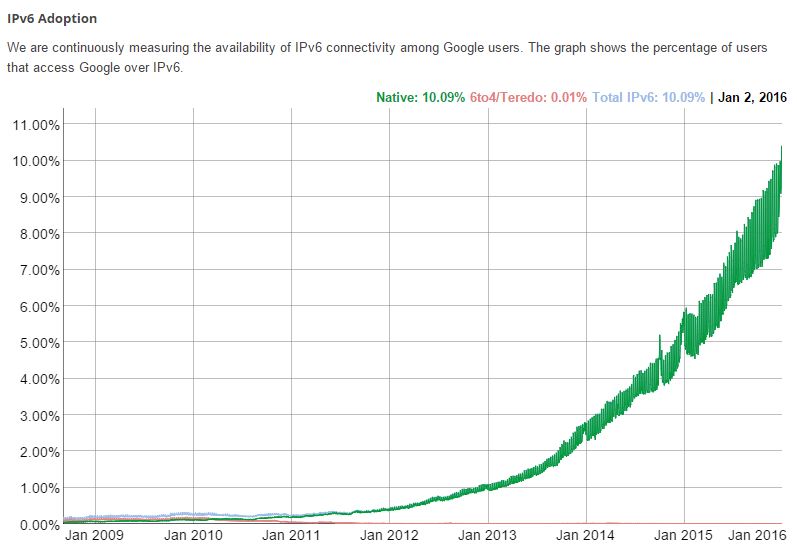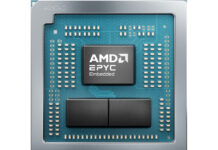As many have heard, the traditional addressing system of the Internet (IPv4) is running out of available addresses. IPv6 is the next-generation addressing system that will have 3.4 x 10^38 addresses. You can read more about IPv6 here. We are clearly seeing that as the world has moved from one PC per household to multiple devices per person, the 4.3 billion address limit of IPv4 is insufficient. Google has a nice graph illustrating this phenomenon.

Google regularly publishes tracking data on the IPv6 space. On January 2, 2016 the adoption figure passed 10%. Here is Google’s graph tracking IPv6 adoption:

One can see a certain trend to the standard released in 1996 and when major Internet companies like Google started pushing for adoption in 2012. We pulled these graphs from Google’s IPv6 statistics page. From January 2014 to January 2015 we saw adoption from around 2.5% to about 5%. Likewise we seem to have had a doubling last year. If this relative trend continues we should see 2016 end with around 20% and 40% by 2018. The trend is clear.

Looking at per-country adoption, there are several countries such as Belgium (over 44%), Switzerland (over 33%) that have been rapidly adopting the new standard. The US, Germany, Portugal and Greece each are over 20%.

We are changing the IPv6 configuration at STH this week (as some may have noticed our 2001:470:f::6 load balancer went down yesterday for an upgrade). There are some major implications of moving to IPv6 other than the 128-bit address size. One of the biggest is that the role of NAT may start to change. One can easily setup an IPv6 DHCPv6 server to hand out IPv6 addresses without using NAT. The benefit is that these addresses will be public so no NAT will be required to get them on the Internet. The negative is that these will be public IPv6 IPs. We plan to do a series of articles on IPv6 in 2016. If one looks at a 3-5 year hardware life-cycle and IPv6 adoption doubling annually, then hardware deployed today will likely be operating in a world where IPv6 has gone from a niche technology to 50% or higher adoption.





Now we are still on 50% and your website don’t support it.
10 years later… Shame…